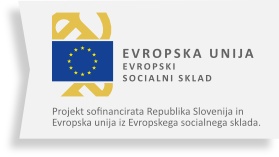Open Space Technology
Aim
Open Space Technology is a process which allows organizations, groups and communities to operate with high levels of dialogue, passion and commitment. It provides leadership and structure to emerge, stimulates meaningful planning and initiates inspired performance. It builds energy, commitment and shared leadership, participants accept responsibility for what does or doesn’t happen.
Description
TARGET GROUP
Young people (15 – 29 years). It can be used when working with adults.
TIME NEEDED
Few hours to a few days
EXPLANATION
Open Space is a self-organizing practice of inner discipline and collective activity. It is a method for convening groups around a specific question or task of importance and giving them responsibility for creating their own agenda and experience. It is best used when the problem is more complex, and we need to gather diverse and creative ideas for a quick resolution.
Open Space is meant to be a fun way of solving a problem with creativity involving a big group of people with the same goal. However, there still needs to be a certain structure to this kind of approach. It involves:
- Problem-solving – bringing individuals together to understand a problem and seek a shared solution.
- Strategic planning – Identifying goals and actions.
- Sharing and synthesizing knowledge – reflecting on what has been learned and understanding how it applies to work going forward.
- Community, team and network building – working together in small and large groups to help build relationships – secondary benefit.
One of the key rules of the Open Space is The Law of Two Feet, which means you take responsibility for what you care about – standing up for that and using your own two feet to move to whatever place you can best contribute. All participants must be involved in the process. Otherwise, it will not work. Each individual must take responsibility to contribute to the best of their abilities. If they feel like they are not useful in a given situation, they, and they alone, must take responsibility to use their two feet and move to a new place where they can make a difference.
Four principles apply to how you navigate in the open space:
- Whoever comes is the right person.
- Whatever happens, is the only thing that could’ve.
- When it starts is the right time.
- When it’s over, it’s over.
IMPLEMENTATION
In the field of career orientation, we can modify it a bit and use it to help us identify topics relevant to our group. The proposed process is described below.
Together with the group, we write down the areas (3) in which they face challenges (e.g., areas of personal mission search, career orientation, and life decisions). We explain the process, the way of recording and the method, principles and law.
For each of the chosen areas, we need two hosts to monitor it (they exchange during the implementation so that they can also co-create the content). The group has about 30 minutes to write down in each area the topics, questions, concerns, and interests they would like to cover in the mentoring meetings.
After 30 minutes (or when the group writes down everything they want), we gather again and examine the harvesting.
A vote on the content of the meetings follows this. Each participant receives 5 votes, which are awarded to one or more topics. We identify the 20 most relevant topics. After that, participants vote again, this time with three votes. In the end, the group chooses a number of topics that match the number of meetings.
LIST OF MATERIALS
- Pens,
- papers.

